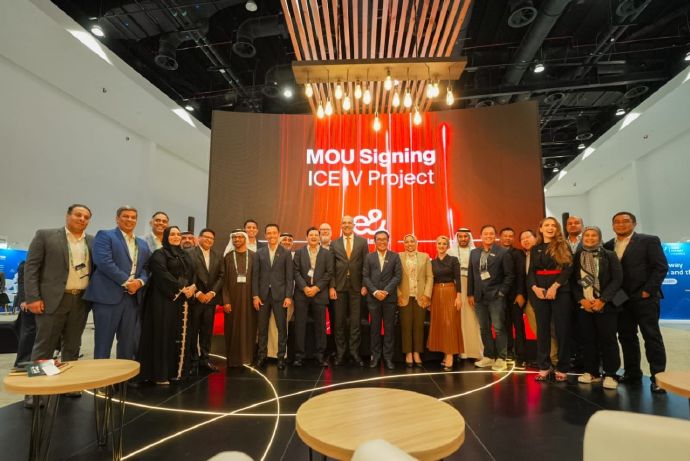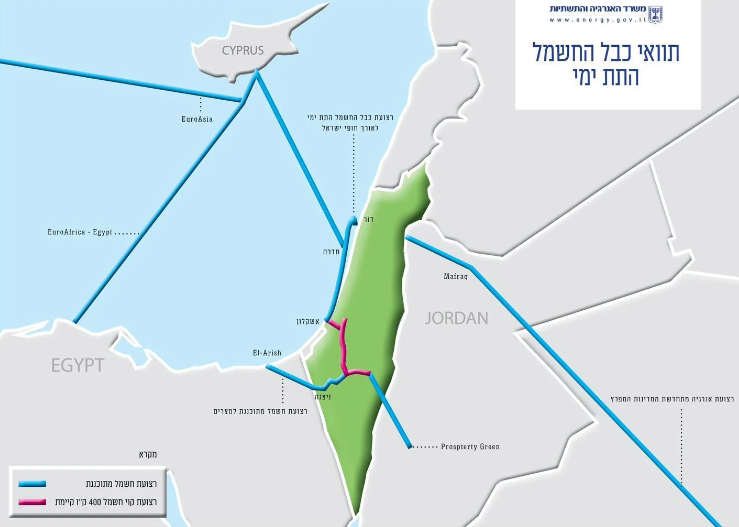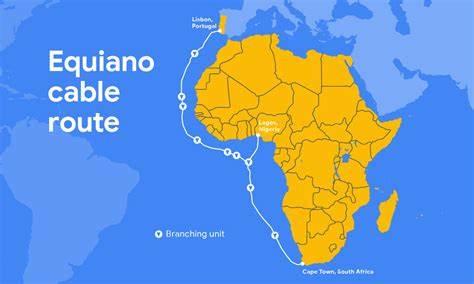Recently, Telecom Egypt announced that it will sign a Memorandum of Understanding (MoU) with three communications companies in the UAE, Indonesia, and India to form an international alliance to establish a submarine cable laying project.
This collaborative project will connect data centers in several countries, starting from Southeast Asia and India, all the way to the Middle East and Egypt, using new, unique, and diverse international paths for information data transmission.
The project is expected to require the laying of 11,000 kilometers of submarine cables, connecting Indonesia and Singapore to Southeast Asia and India, and then extending to the Sultanate of Oman, the UAE, and Egypt.

Egypt – Internet Cable Center
Egypt is located in northeastern Africa and west of Asia, spanning Asia and Africa, with the Mediterranean Sea to the north and the Red Sea to the east. Egypt is both Asia and Africa between the land transportation hub, but also the Atlantic Ocean and the Indian Ocean between the sea route of the shortcut, the strategic location is very important. The Suez Canal greatly shortens the voyage between the Atlantic Ocean and the Indian Ocean.
Because of Egypt’s geographic importance and specificity, the placement of global communications equipment or data transmission in and around the country can be particularly problematic.
In a way, Egypt’s geographic location is of some strategic importance.
The Arab Republic of Egypt spans two continents, Asia and Africa, with the vast majority of its territory located in northeastern Africa and only the Sinai Peninsula, east of the Suez Canal, in the southwest corner of Asia.
It is bordered by the Mediterranean Sea in the north, the Red Sea in the east, Saudi Arabia across the sea, Sudan in the south, and Libya in the west. The Suez Canal communicates the Red Sea and the Mediterranean Sea, which makes Egypt located in Europe, Asia, and Africa, the three continents of the sea transportation hub. Egypt’s coastline is about 2,700 kilometers long, of which the Mediterranean coast is about 1,000 kilometers long and the Red Sea coast is about 1,700 kilometers long.
Some of the Existing Sea Cable Connections in Egypt
1
In the second half of 2023, Israel’s Ministry of Energy and Infrastructure plans to build a 150-kilometer submarine cable along the country’s Mediterranean coast, which will connect to Europe and potentially the Gulf States. Israel’s State Council for Planning and Construction subsequently announced that it would move forward with the planning and construction of the submarine power cable, initiated by Energy Minister Yisrael Katz, following a review of the matter by the Ministry of Energy and Infrastructure.
2
Greece-based Copelouzos Group plans to build a 1,373-kilometer-long high-voltage, direct-current submarine transmission line to connect Egypt to the Attica region of Greece. The company said its representatives recently met with Egyptian President Abdel Fattah el-Sisi, Prime Minister Mustafa Madbouly, and Electricity Minister Mohamed Shakir to review the status of the Greg Elika Interconnection Project.

3
2020, in the global grip of the new crown epidemic, Telecom Egypt and the St. Helena Government (SHG) have signed an agreement to connect St. Helena to Telecom Egypt’s submarine fiber optic cable system through the construction of the Equiano submarine submarine submarine cable system. Jeremy Roberts, Fiber Optic Project Manager at SHG, said, “This is a major fiber optic project milestone, and with the new submarine cable we have established a link with our international partners that is vital to further improving local international internet connectivity.

Egypt – The Internet Cable Bottleneck
Why is Egypt one of the biggest bottlenecks for Internet submarine cable laying?
The Asia-Africa-Europe 1 Internet cable travels 15,500 miles along the seabed, connecting Hong Kong to Marseille, France. As it snaked through the South China Sea and Europe, the cable helped provide Internet connectivity to more than a dozen countries from India to Greece.
When the cable was cut on June 7, millions of people were taken offline and faced temporary Internet outages.
The cable, also known as AAE-1, was severed when it briefly crossed land in Egypt. Another cable was also damaged in the incident, and the cause of the damage is unknown.
However, the impact was immediate.
“It affected about seven countries and several over-services,” says Rosalind Thomas, managing director of SAEx International Management, which plans to create a new submarine cable connecting Africa, Asia, and the US. “The worst was Ethiopia, which lost 90 percent of its connectivity, followed by Somalia, which lost 85 percent.”
Subsequent analysis showed that cloud services from Google, Amazon, and Microsoft were also disrupted.
While connectivity was restored within hours, the outage highlights the vulnerability of the world’s more than 550 undersea internet cables and the huge role Egypt and the nearby Red Sea play in internet infrastructure.
ZMS cable experts can tell you with certainty that by opening a map of the world’s submarine Internet cables and finding where Egypt is located, it is immediately clear why Internet experts have been focusing on the region for years.
The Importance of Egypt for Submarine Cable Laying
The 16 cables in the region are centered across the Red Sea and touch land in Egypt, where they travel 100 miles across Egypt to the Mediterranean Sea.
It is estimated that around 17% of the world’s internet traffic travels along these cables and through Egypt.
Alan Mauldin, head of research at TeleGeography, a telecom market research firm, says that last year the region had 178 terabytes or 178,000,000 Mbps – the median home Internet speed in the U.S. is 167 Mbps.
Doug Madory, head of Internet analytics at local monitoring firm Kentik, says Egypt has become one of the Internet’s most prominent bottlenecks for several reasons.
First, its geographic location contributes to the concentration of cables in the region. Crossing the Red Sea and traveling through Egypt is the shortest (mostly) underwater route between Asia and Europe. While some intercontinental Internet cables traverse land, it’s usually safer to place them on the ocean floor so they’re harder to tamper with or snoop on.
The Significance of Egypt’s New Submarine Cable Laying
The sea route runs through the Sunda Strait between the Indonesian archipelago, making it a well-known communications corridor and a new international gateway to the Asian continent.
It is also the first international cable to land in Kochi, India in decades, and the new project utilizes the latest submarine cable technology.
The terrestrial infrastructure of the project extends to two areas: the terrestrial infrastructure connecting Egypt to the Middle East, and the terrestrial infrastructure connecting Kochi and Chennai to India.
The project is scheduled to become operational in the fourth quarter of 2027.
The MoU was signed in Dubai by Saif Mounib, Executive Vice President of Telecom Egypt International and Carriers, Nabil Bakoush, Chief Executive Officer of Carrier Services and Wholesale Sales at the UAE company, and Budi Satria Dharma Purba, Chief Executive Officer of Indonesia and representative of the company in India.
For Egypt, it will always be at the center of Internet connectivity in Europe and Asia. Geography cannot be changed.
However, Mauldin said more should be done to protect the world’s underwater internet cables because everyone depends on them.
“It’s very important for national security, for the economy, to keep these things functioning properly.”
